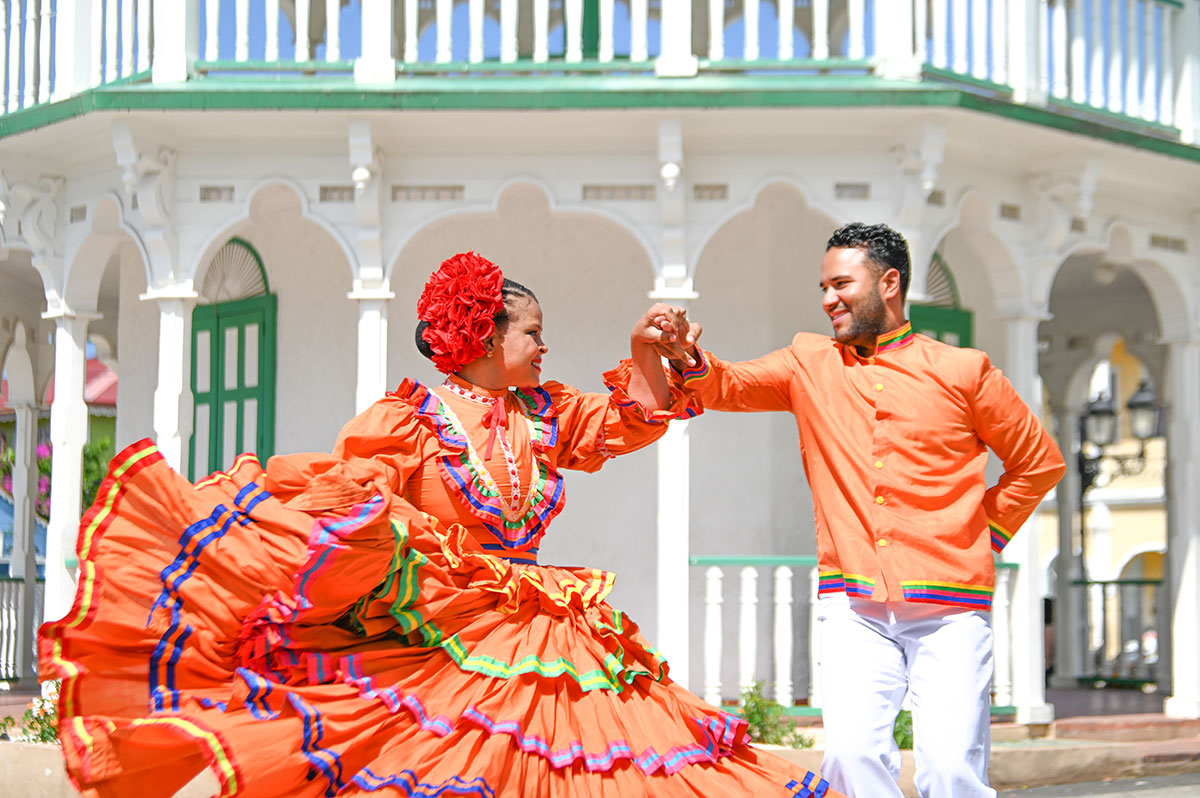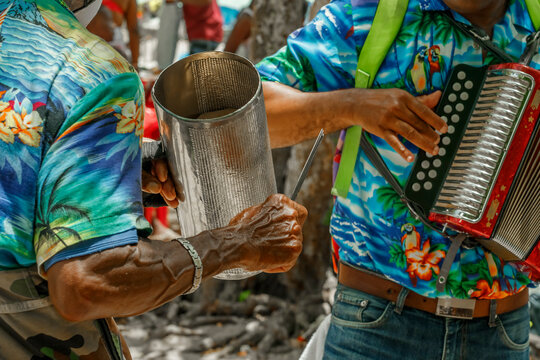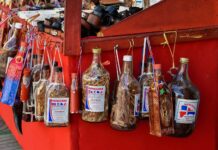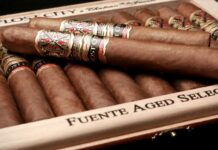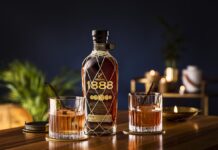Dominican music is a vibrant and diverse tapestry that weaves together the rich cultural heritage and artistic expressions of the Dominican Republic. From the infectious beats of merengue and bachata to the latest generation Dembow and Regaetton, Dominican music encapsulates the essence of the nation’s history, struggles, triumphs, and celebrations.
NAVIGATE THIS ARTICLE:
Merengue
Merengue is undoubtedly the crown jewel of Dominican music, having gained international recognition for its energetic beats and infectious dance style. Rooted in African and European influences, merengue embodies the spirit of the Dominican people. The driving force of merengue lies in the Accordion, Tambora drum, Güira (a metal scraper), and in some cases, the Marimba.
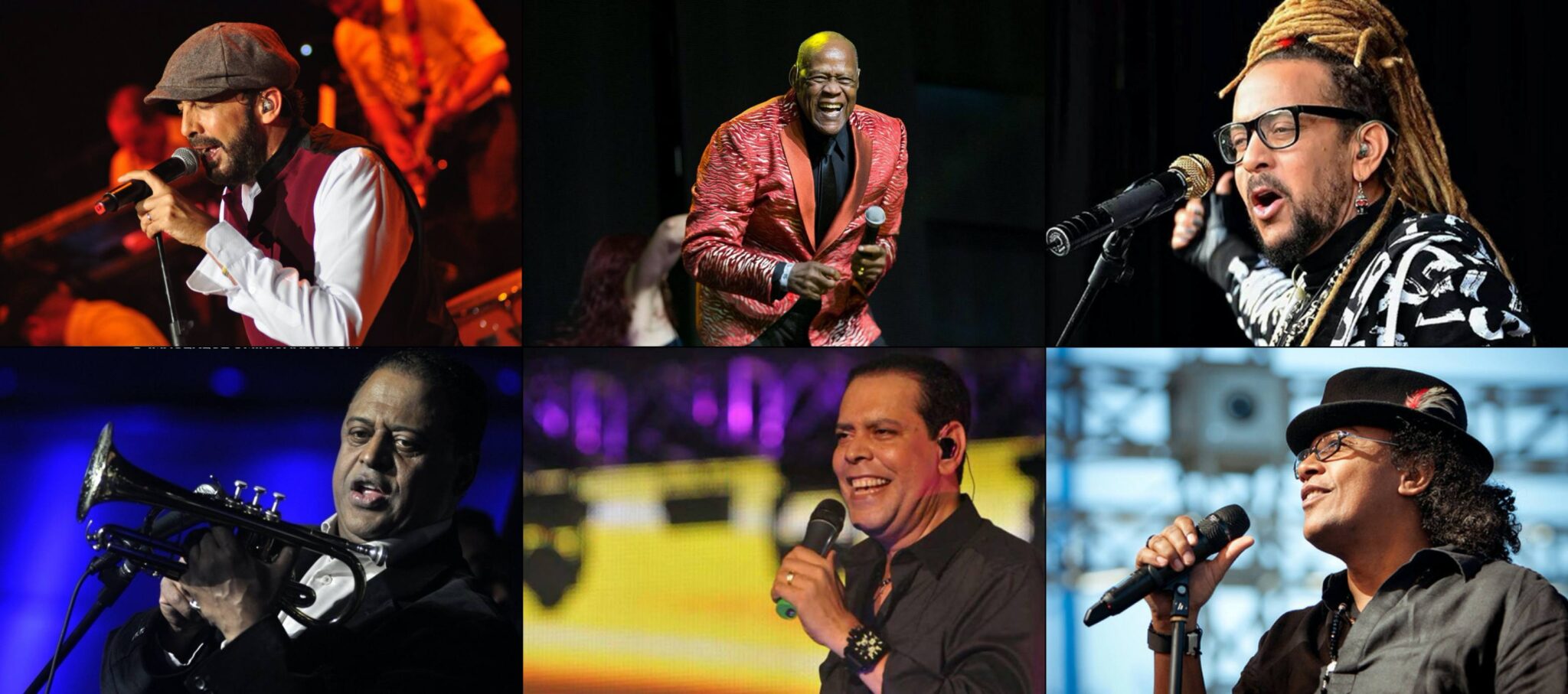
Origins of Merengue
The exact origins of merengue are debated, but it is believed to have emerged in the early 19th century in the rural regions of the Dominican Republic. The dance and music genre was heavily influenced by African rhythms and European musical elements, particularly the Spanish contradanza, a line dance popular in the 18th and early 19th centuries thought to come from an older English “country dance” (thus the Spanish corruption of the name).
One popular theory suggests that merengue was inspired by the dance movements of enslaved African laborers who worked on sugar plantations. These laborers created a unique dance style characterized by quick footwork and hip movements, accompanied by lively music.
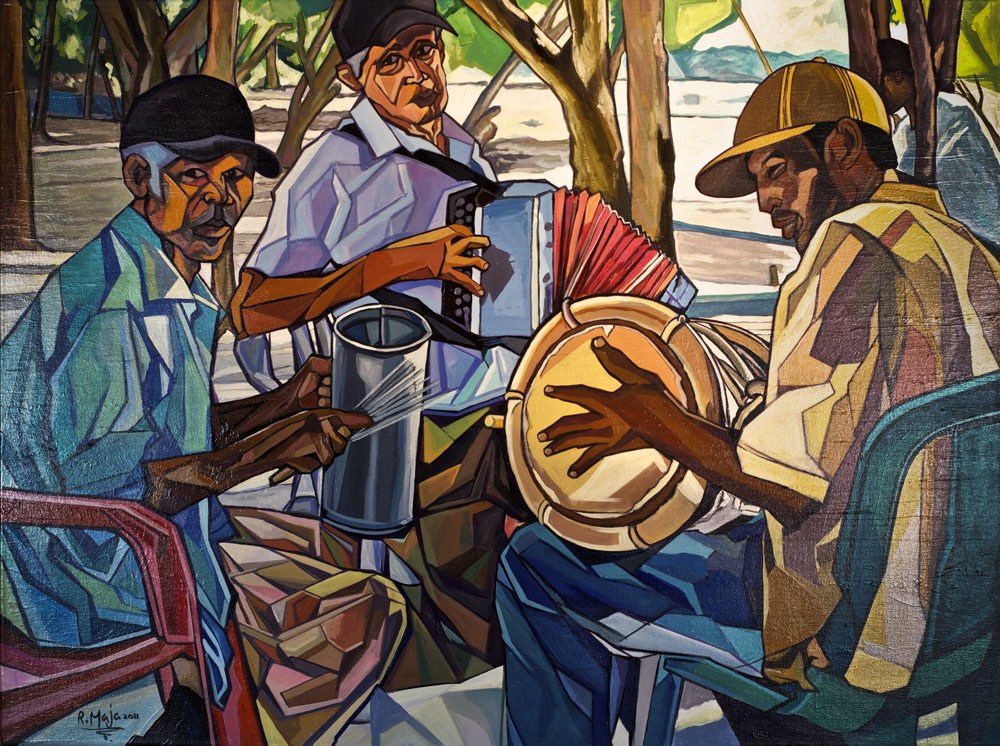
Rise in Popularity (Early to Mid-20th Century): Merengue initially gained popularity in rural areas and eventually spread to urban centers like Santo Domingo. In the early 20th century, merengue started to incorporate brass instruments such as the trumpet and saxophone, adding a vibrant and joyful sound to the music.
One pivotal figure in the popularization of merengue was Juan Espínola, also known as “El Ciego de Nagua.” He was a blind accordionist and singer who achieved great fame in the 1920s and 1930s. Espínola’s recordings helped introduce merengue to a broader audience and set the stage for its future development.
Later on, Merengue figures such as Fernando Villalona, Johnny Ventura, Hermanos Rosario, Wilfrido Vargas, Sergio Vargas and many other bands took the rhythm overseas. Juan Luis Guerra & 440 became a universal phenomenon.
Bachata
Originating in the Dominican countryside, bachata has transformed from an acoustic guitar-based folk music genre to a global phenomenon. Known for its soulful and romantic lyrics, bachata captures the joys and sorrows of love and heartbreak.
With its signature guitar strumming patterns, bongos, bass, and güira, bachata has seduced music lovers worldwide. Artists such as Juan Luis Guerra and Romeo Santos have elevated bachata’s popularity, blending it with contemporary elements and reaching a wider audience.
Perico Ripiao
Perico Ripiao, which is commonly referred to as typical merengue in the Dominican Republic, is the oldest style of music still commonly played. It originated in the northern valley region near the city of Santiago, known as El Cibao, a rural and agricultural area.
That is why some merengue musicians call it the “countryside music” of the Dominican Republic. It first appeared in the 1840s when moralists tried to prohibit the music due to its suggestive lyrics and the sensual movements of merengue dancers.
The very name of the music suggests controversy: it is said that “perico ripiao” is the name of a brothel where the music was originally played. Of course, the efforts to censor the music were unproductive and unsuccessful as its popularity has extended to the present day.
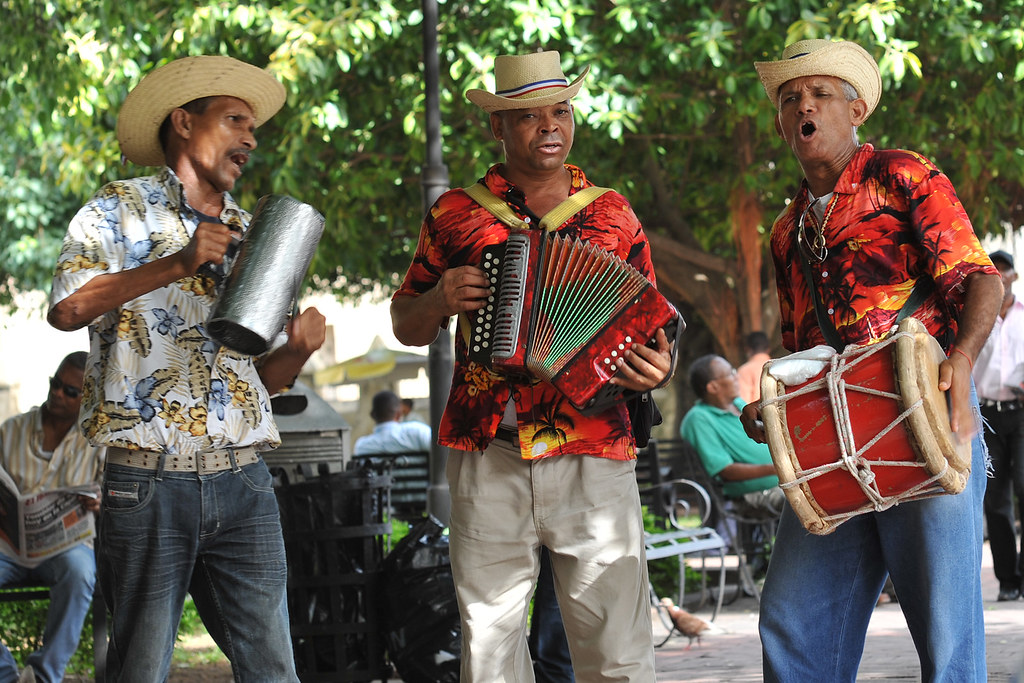
The music exudes joy and celebration, often accompanied by traditional instruments like the tambora, güira, and the accordion; The marimba (marimbula) also became part of it. Perico Ripiao’s infectious beats and catchy melodies have made it a popular genre not only in the Dominican Republic but also across the Caribbean and Latin America.
The number of Merengue Tipico performers has grown in the last decade, and the most famous one is Fefita La Grande; followed by El Prodigio, La India Canela, Raquel Arias, Español Nuñez, and more recently, La Barbie del Acordeon and El Rubio Acordeon.
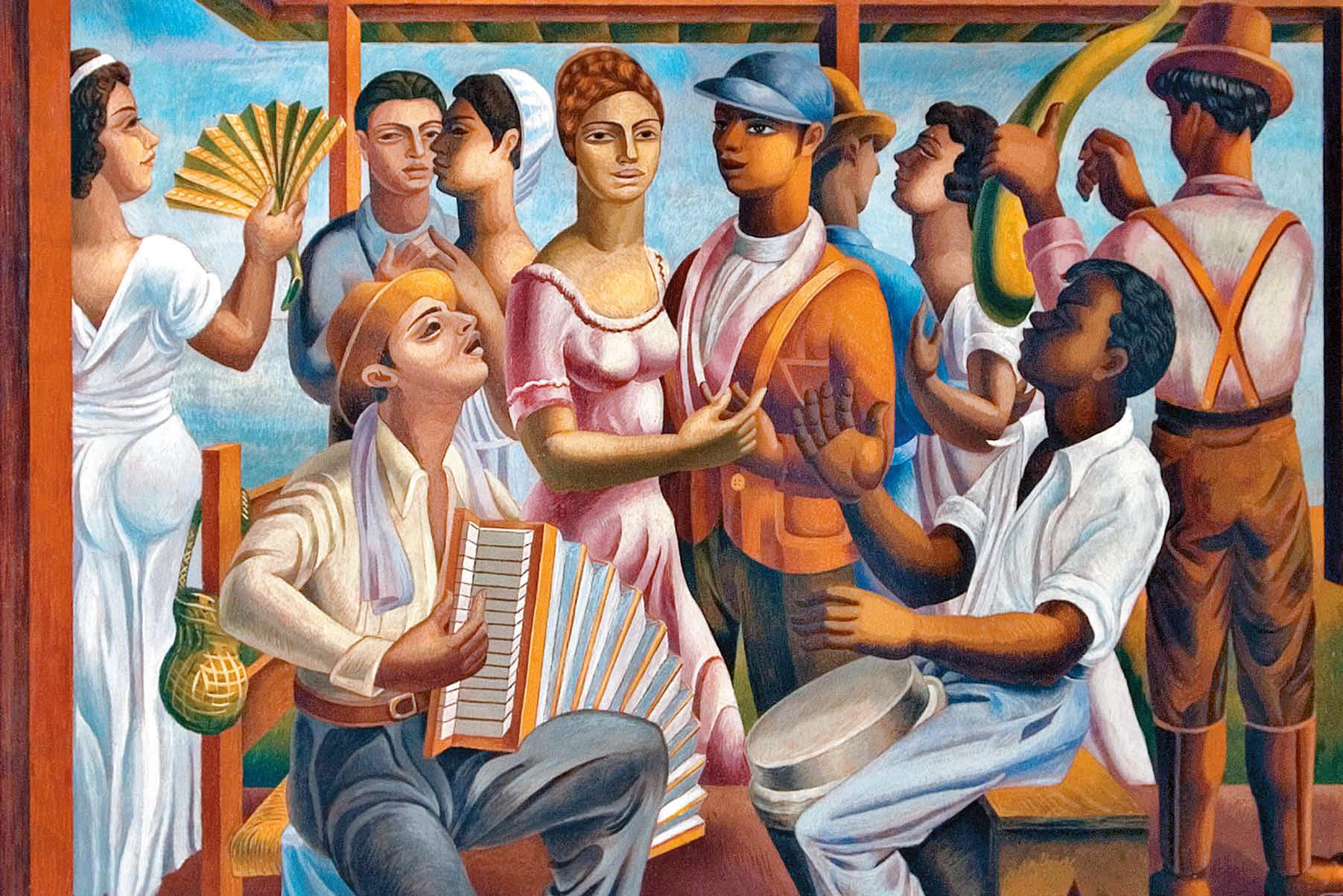
Initially, this type of merengue was played with string instruments; however, when Germans arrived on the island in the late 19th century, trading their instruments for tobacco, the accordion quickly replaced the strings as the main instrument.
The two main percussion instruments, the güira and the tambora, have been part of the ensemble since the early days of the music and are so important that they are often considered symbolic of the entire country.
The güira is a metal scraper believed to have Native Taíno origins, while the tambora is a two-headed drum of African origin. Alongside the European accordion, the typical ensemble symbolizes the three cultures that merged to create the Dominican Republic of today.
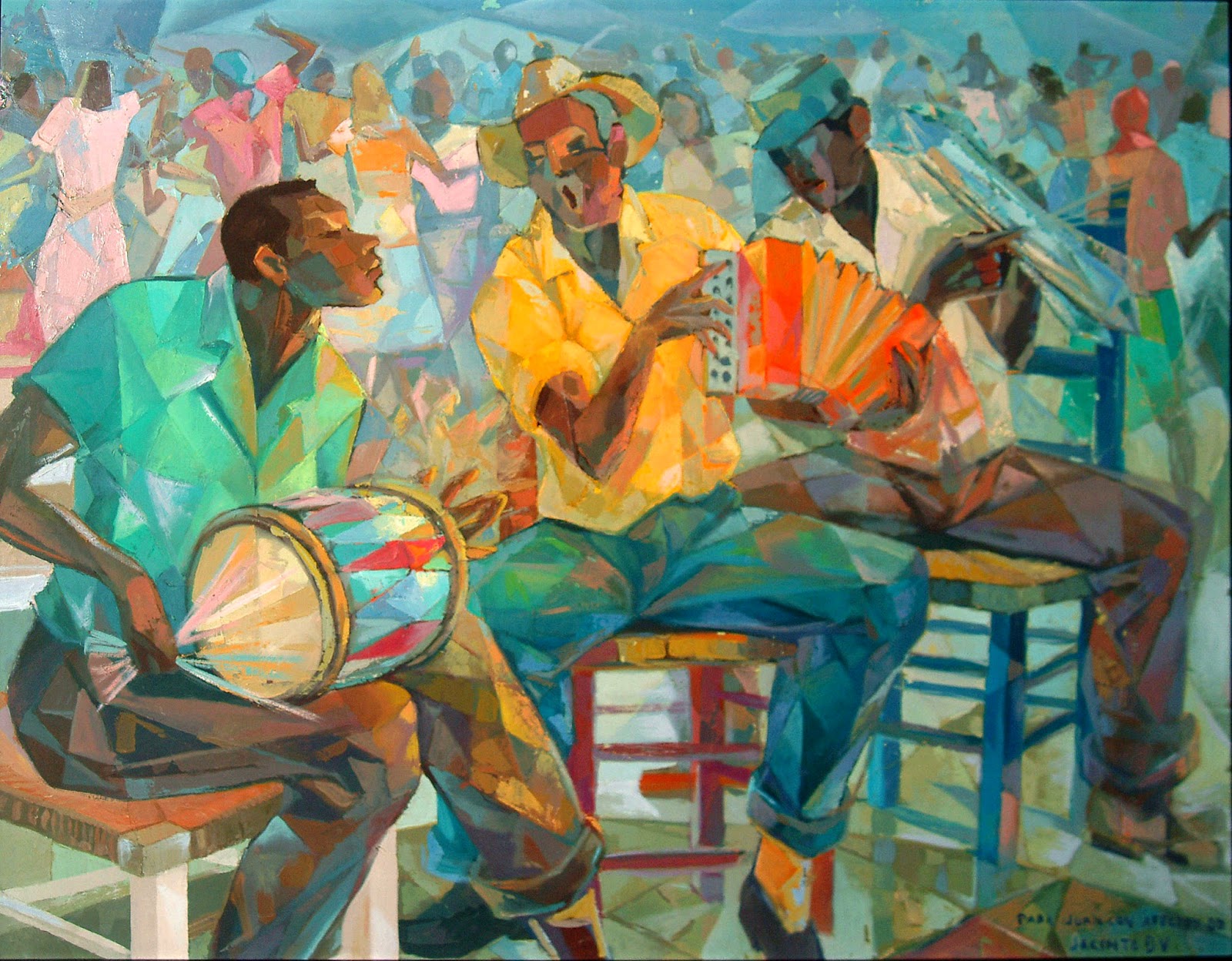
Fefita la Grande
Fefita la Grande, whose real name is Manuela Josefa Cabrera Taveras, is a Dominican accordionist and singer. She is considered one of the most important figures in the history of merengue típico, a traditional Dominican genre.
Fefita was born in San José, Santiago Rodríguez, Dominican Republic, in 1943. She began playing the accordion at a young age, and by the time she was a teenager, she was already performing professionally. She quickly became known for her powerful vocals and her virtuosity on the accordion.
In the 1970s, Fefita began to gain international recognition. She toured extensively throughout the Caribbean and Latin America, and she also performed in the United States and Europe. She has released over 30 albums, and she has won numerous awards, including the Premio Casandra for Best Merengue Artist.
Fefita is a living legend of merengue típico. She is known for her energetic live performances, her outspoken personality, and her commitment to preserving the traditional sound of the genre. She is a true ambassador of Dominican culture, and she continues to inspire and entertain fans around the world.
El Prodigio ( Krency Garcia)
El Prodigio, whose real name is Krency García, is a famous merengue típico accordionist from Cabrera, Dominican Republic. He is known throughout the genre for his rapid instrumental solos, his origination of fusion in merengue tipico with genres like jazz, and his rivalry with fellow accordionists, Geovanny Polanco and Kerube (head of the tipico band Kerubanda).
García began playing the accordion at the age of 5, and by the age of 10, he had won a national accordion competition. He went on to study jazz at Berklee College of Music in Boston, and after graduating, he returned to the Dominican Republic to pursue a career in music.
El Prodigio has released 11 albums, and he has won numerous awards, including five Premios Casandra. He has also collaborated with a number of other artists, including Juan Luis Guerra, Aventura, and Chichí Peralta.
La India Canela
La India Canela, whose real name is Lidia María Hernández López, is a Dominican accordionist and singer. She is one of the most popular and respected artists in the merengue típico genre, a traditional Dominican music and dance.
La India Canela was born in El Limón, Villa González, in the Santiago Province of the Dominican Republic. She began playing the accordion at a young age, and by the time she was 14 years old, she was already performing professionally. She quickly became known for her virtuosity on the accordion and her powerful vocals.
In the 1980s, La India Canela began to gain international recognition. She toured extensively throughout the Caribbean and Latin America, and she also performed in the United States and Europe. She has released over 10 albums, and she has won numerous awards, including the Premio Casandra for Best Merengue Artist.
Raquel Arias
La Barbie del Acordeon
El Rubio Acordeon
Son & Bolero
- Son is a genre of folk music that originated in Cuba in the 19th century. It is characterized by a syncopated rhythm, a call-and-response vocal style, and a simple melody. Son is often accompanied by a variety of instruments, including the guitar, the tres, the bongos, and the maracas.
- Bolero is a genre of romantic ballad music that originated in Cuba in the late 19th century. It is characterized by a slow tempo, a repeating rhythmic figure, and a beautiful, singing melody. Boleros are often accompanied by a variety of instruments, including the guitar, the piano, and the violin.
Both son and bolero music have been very influential in the development of Latin American music. Son is considered to be the parent genre of many other Latin American genres, including salsa, merengue, and bachata. Bolero has also been very influential, and it has been covered by artists from all over the world.
Dominican Son Music Playlist:
Here are some of the most famous son and bolero songs:
- Son: “El Manisero” by Miguel Matamoros, “Son de la Loma” by Sindo Garay, “La Guantanamera” by Joseíto Fernández
- Bolero: “Bésame Mucho” by Consuelo Velázquez, “Noche de Ronda” by Agustín Lara, “Perfidia” by Alberto Dominguez
Son and bolero music are both beautiful and expressive genres of music that have had a profound impact on Latin American culture. They are still popular today, and they continue to be enjoyed by people all over the world.
Dominican Bolero Music Playlist:
Here are some additional details about son and bolero music:
- Son music is typically played in 4/4 time, while bolero music is typically played in 3/4 time.
- Son music is often accompanied by a call-and-response vocal style, while bolero music is typically sung in a solo voice.
- Son music is often more upbeat and lively than bolero music, which is typically more slow and romantic.
INSTRUMENTS USED IN MERENGUE
Accordion:
The accordion was created in the first half of the 19th century, to be more precise, on May 6, 1829. Cyrill Demian, who was dedicated to manufacturing pianos and organs, presented a small new device in Vienna, measuring only 22 centimeters wide, 9 centimeters high, and 6 centimeters thick.
The curiosity of this artifact is that only the right hand could be used to play one of the five chords it had. Since it was an inexpensive instrument and very easy to play, its popularity quickly spread among the working class, and it was widely used to accompany traditional dances and songs.
It expanded from Germany to France and later reached Spain, Belgium, Switzerland, Germany, and Italy. Europeans brought it to the Dominican Republic, where it was adopted by the local musicians of Merengue tipico.
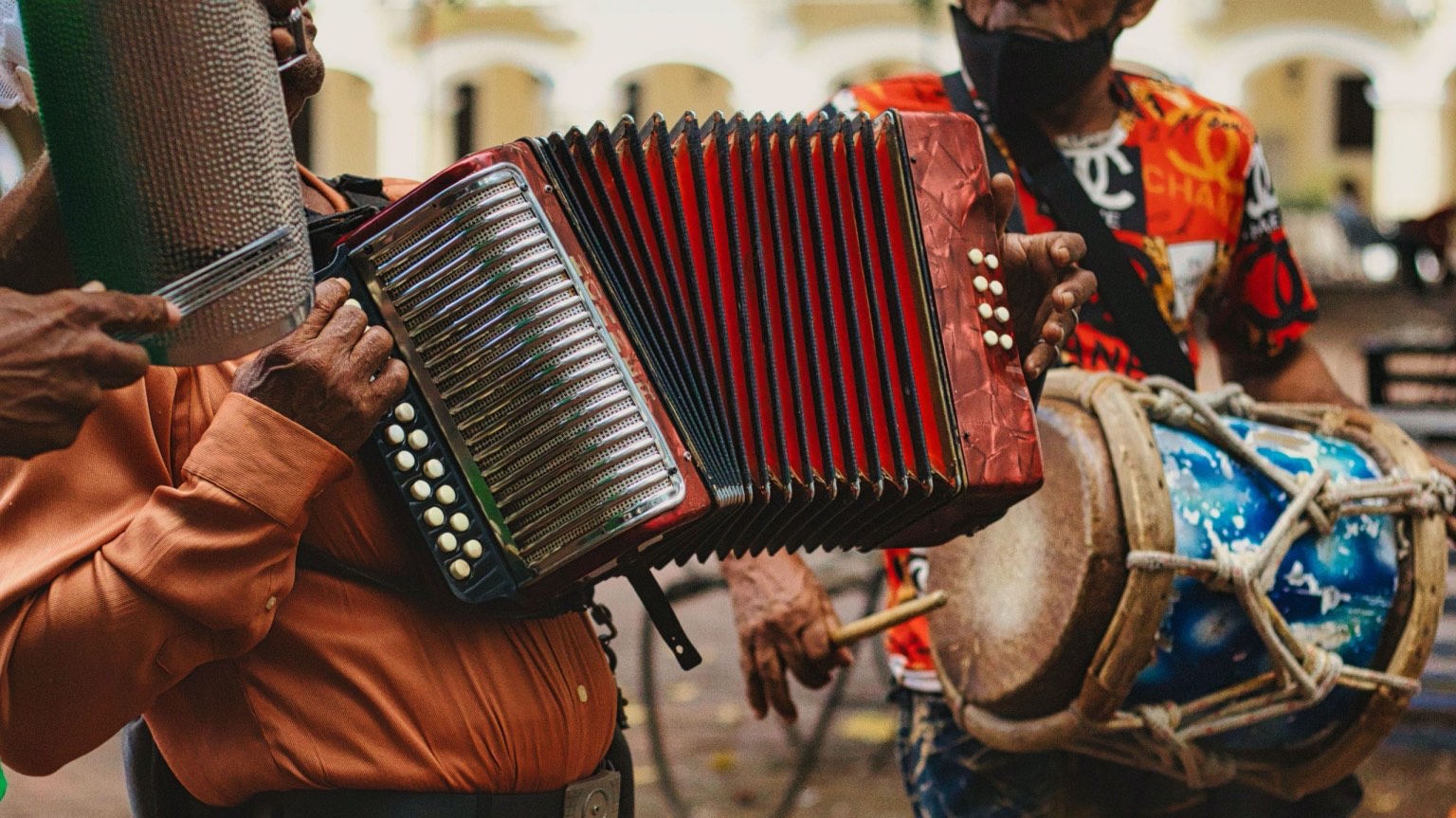
Tambora:
The tambora is an instrument of African origin that belongs to the group of percussion instruments. Traces of this type of musical equipment can be found from Ancient China to Persia and Africa.
The tambora arrived in America with slavery. In other words, the cultivation of sugarcane and other labor-intensive activities that required the importation of African manpower by European conquerors led to its introduction in these lands.
The drumheads are crafted from deer, goat, or sheep skin. The components are assembled with the help of a pair of hoops on which the drumheads are indirectly secured. It has a cylindrical shape with medium depth. It is considered an instrument whose sound is produced by the vibration of two tensioned drumheads.
It is played by striking the drumhead with a 15-centimeter-long padded stick called a “remo,” while the body is struck with another smooth-tipped stick called a “golpe.” It appears that the sound of the tambora depends on the quality of the leather used for the drumheads’ fabrication.

Guira ( also called Güiro):
The güiro is a musical instrument from the percussion family classified as an idiophone. It generally has the shape of a hollowed-out gourd (facilitating resonance), paying homage to those traditionally made with this fruit.
The part that produces the main sound effect is the rough, edged, or slotted external surface. Finally, it should be noted that it can be made of wood or metal primarily, but the materials can vary depending on the desired sound.
Guiros are played by holding the gourd in the palm of the left hand with the thumb held in a sound hole on the back. Some guiros have two sound holes, meant to be held with the thumb and finger. These holes help the player keep the guiro steady and in place while playing fast or complex rhythms.
HISTORY AND ORIGIN OF THE GÜIRO
Its origins, like many instruments, can be traced back to the diversification of cultures during the European colonization of much of the planet, specifically in Africa and America. The güiro spread throughout South America and the Caribbean.
The first examples found on the continent were in Puerto Rico and Cuba, long before it became better known in broader Latin musical genres such as salsa and conga.
WHAT IS THE GÜIRO CALLED IN DIFFERENT COUNTRIES?
Each Latin American country has its own way of making and decorating the güiro to give it its own identity, as well as its own name. In Brasil it is called “reco-reco” ; in Colombia “carrasca”, in Panamá “churuca”, and in Puerto Rico “güícharo“.
The main difference between the güiro and the güira is the material they are made of. The güira is of Dominican origin and has great relevance in the rhythmic base of two music genres specific to the country: bachata and merengue.

Marimba (Marimbol, Marimbula)
The Marimba is a unique and fascinating musical instrument that originates from the Caribbean, particularly Puerto Rico and Cuba. It is a member of the idiophone family, specifically classified as a box-resonated lamellophone. The instrument consists of a rectangular wooden box, typically made of hardwood, with tuned metal tongues or bars affixed on top.
These metal tongues are played by striking them with the hands, fingers, or mallets, producing distinct melodic tones. The Marimba’s design allows for a range of musical possibilities. The number of metal tongues varies, typically ranging from six to ten, and they are usually arranged in a diatonic scale or a specific musical key.
Each tongue produces a different pitch when struck, creating a melodic pattern that can be played by one or multiple players. The positioning of the tongues can vary in design, some will have them shorter than others, affecting the sound output.
The instrument’s sound is characterized by a warm, resonant tone with a percussive quality. It possesses a rich timbre that falls somewhere between a wooden xylophone and an upright bass. The Marimba’s versatility allows it to be used in various music genres, including traditional Caribbean music, jazz, folk, and contemporary styles.
In performances, the Marimba often serves as a rhythmic and melodic foundation, providing a harmonic backbone to the ensemble. It can be played as a solo instrument, accompanying vocals, or alongside other instruments like guitars, drums, and percussion. The player can create different articulations and dynamics by striking the metal tongues with varying degrees of force, resulting in a wide range of expressive possibilities.
It is used as an accompanying instrument in both rural and urban groups that perform popular dance music, although exceptionally, it has been used for ceremonial purposes in some Afro-American religious cults. The mixing that originated between the black and white populations of America gave rise to entirely new rhythmic and harmonic expressions that were the result of cultural syncretism.
This complex process of transculturation generated unique conditions that enabled the emergence of an artistic sensitivity and required specific means of expression capable of conveying unprecedented musicality.
Learn Merengue Dancing
Dembow
Dominican dembow is a genre of music that originated in the Dominican Republic in the early 1990s. It is characterized by its fast tempo, heavy basslines, and catchy melodies. Dominican dembow is often infused with elements of traditional Dominican music, such as merengue and bachata.
The name “dembow” comes from the dembow riddim, a Jamaican dancehall riddim that was popularized by Shabba Ranks in his 1990 song “Dem Bow”. The dembow riddim is characterized by its fast tempo (typically 140-160 BPM) and its repetitive four-on-the-floor beat.
Dominican dembow has been influenced by a variety of genres, including reggaeton, dancehall, merengue, bachata, hip hop, and electronic dance music. It has also been influenced by the culture of the Dominican Republic, which is a melting pot of African, European, and Caribbean influences.
Dominican dembow has become increasingly popular in recent years, and it is now one of the most popular genres of music in the Dominican Republic. It has also gained a significant following in other parts of Latin America and the world.
Here are some of the key features of Dominican dembow:
- Fast tempo (typically 140-160 BPM)
- Heavy basslines
- Catchy melodies
- Infused with elements of traditional Dominican music
- Often has explicit lyrics
Some of the most popular Dominican dembow artists include El Alfa, Chimbala, La Materialista, Tokischa, and Kiko el Crazy. Dominican dembow has been featured in songs by international artists such as Major Lazer, J Balvin, and Becky G.
Dominican dembow is a vibrant and exciting genre of music that is sure to continue to grow in popularity in the years to come. It is a genre that is full of energy and life, and it is sure to get you moving.
Here are some of the most popular Dominican dembow songs:
- “Pirata” by El Alfa
- “Chambea” by Chimbala
- “Piketona” by La Materialista
- “Wow BB” by Tokischa feat. Rosalía
- “Perreo Intenso” by Kiko el Crazy
Reggaeton
Dominican reggaeton is a subgenre of reggaeton that originated in the Dominican Republic in the early 1990s. It is characterized by its fast tempo, heavy basslines, and catchy melodies. Dominican reggaeton is often infused with elements of traditional Dominican music, such as merengue and bachata.
Some of the most popular Dominican reggaeton artists include El Alfa, Natti Natasha, Amenazzy, Rochy RD, and Tokischa. Dominican reggaeton has become increasingly popular in recent years, and it is now one of the most popular genres of music in the Dominican Republic. It has also gained a significant following in other parts of Latin America and the world.
Here are some of the key features of Dominican reggaeton:
- Fast tempo (typically 120-140 BPM)
- Heavy basslines
- Catchy melodies
- Infused with elements of traditional Dominican music
- Often has explicit lyrics
Dominican reggaeton has been influenced by a variety of genres, including reggaeton from Puerto Rico, merengue, bachata, hip hop, and dancehall. It has also been influenced by the culture of the Dominican Republic, which is a melting pot of African, European, and Caribbean influences.
Dominican reggaeton has been a major force in the global music scene in recent years. It has helped to popularize Dominican culture and has given Dominican artists a platform to showcase their talents. Dominican reggaeton is here to stay, and it is sure to continue to evolve and grow in the years to come.
Audio Version – Listen to this article Podcast


